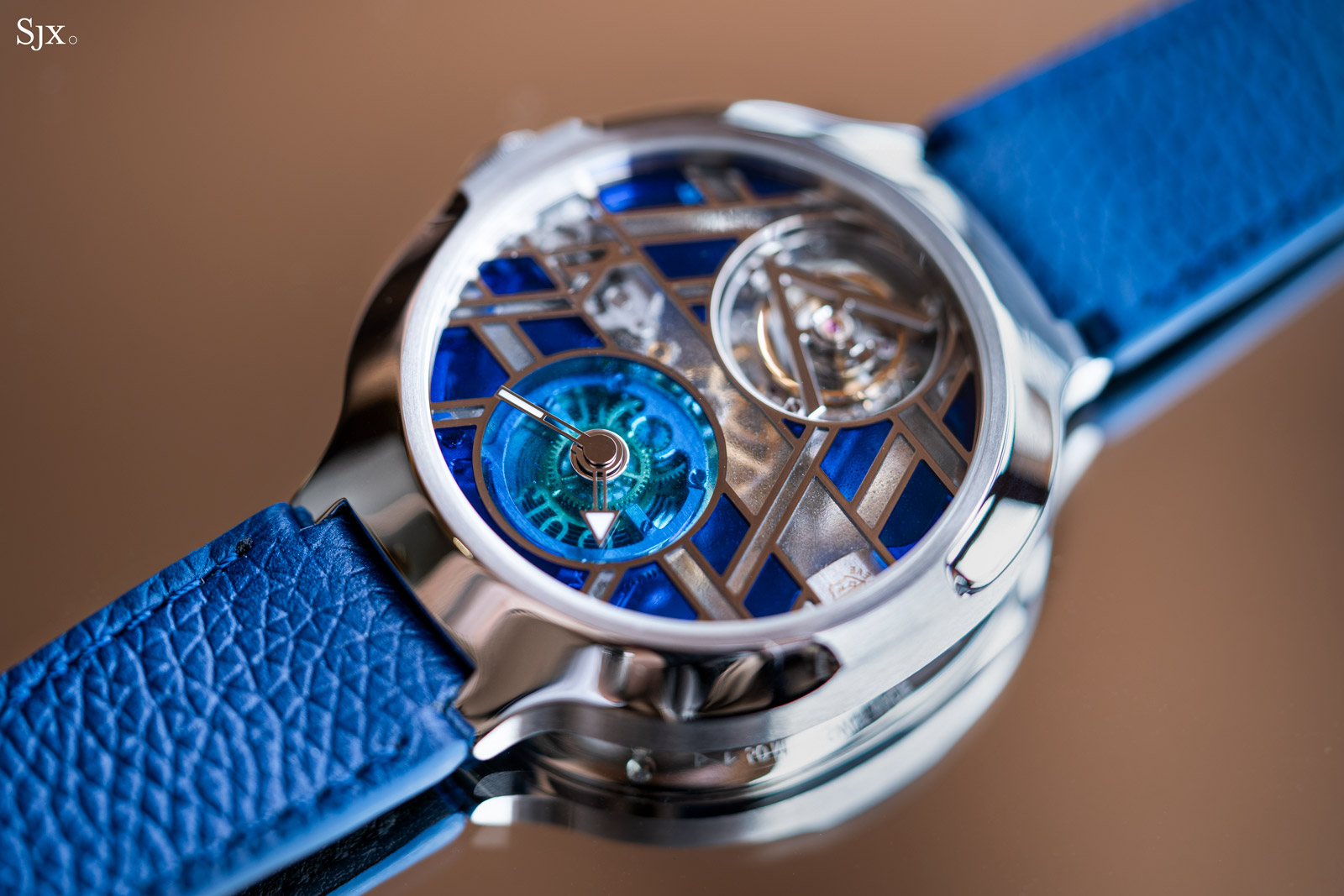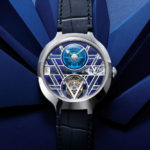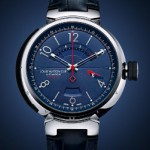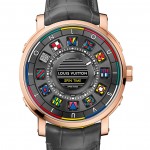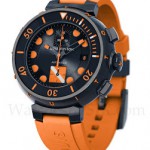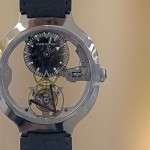Up Close: Louis Vuitton Voyager Flying Tourbillon Plique-à-Jour
An impressive, in-house achievement.
A watch that exemplifies the ambitious vertical integration of Louis Vuitton’s watch division, the Voyager Flying Tourbillon Poinçon de Genève Plique-à-Jour combines a skeleton tourbillon movement with a plique-à-jour enamel dial.
Transparent and akin to stained glass, plique-à-jour enamel is rare in watchmaking, with only a handful of brands having accomplished it. But this specific form on the Voyager tourbillon, which goes without any backing under the dial, is even more uncommon. Because there is no base for the dial, the transparency of both the dial and the movement is maximised.
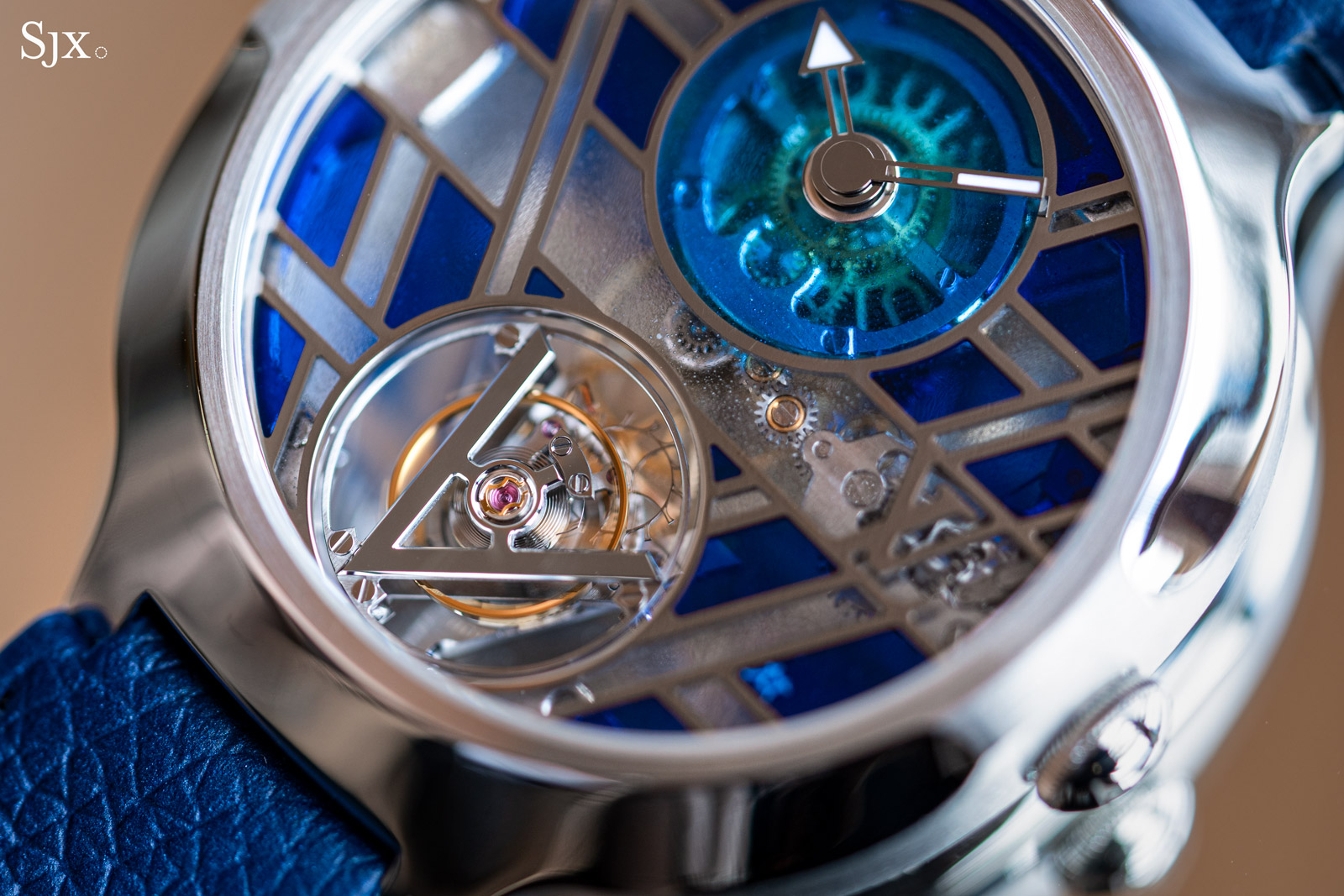
Initial thoughts
The original version of this watch, essentially identical but without the enamel dial, was launched in 2016. Louis Vuitton didn’t get much attention as a watchmaker then, though I liked the watch, particularly the slim profile and open-worked movement made by La Fabrique du Temps (LFT). The quality of the watch indicated Louis Vuitton was going places as a watch brand.
Louis Vuitton has come a long way since then as a watchmaker. It now boasts several automaton wristwatches, the Rexhep Rexhepi RR01 collaboration, and its own prize for independent watchmakers. Appropriately enough, the Voyager tourbillon has been enhanced, reflecting the substantial expansion and development of LFT since 2016. The movement, dial, and case are all made in-house at LFT, reflecting Louis Vuitton’s impressive manufacture that now rivals some of the most prominent names in haute horlogerie.
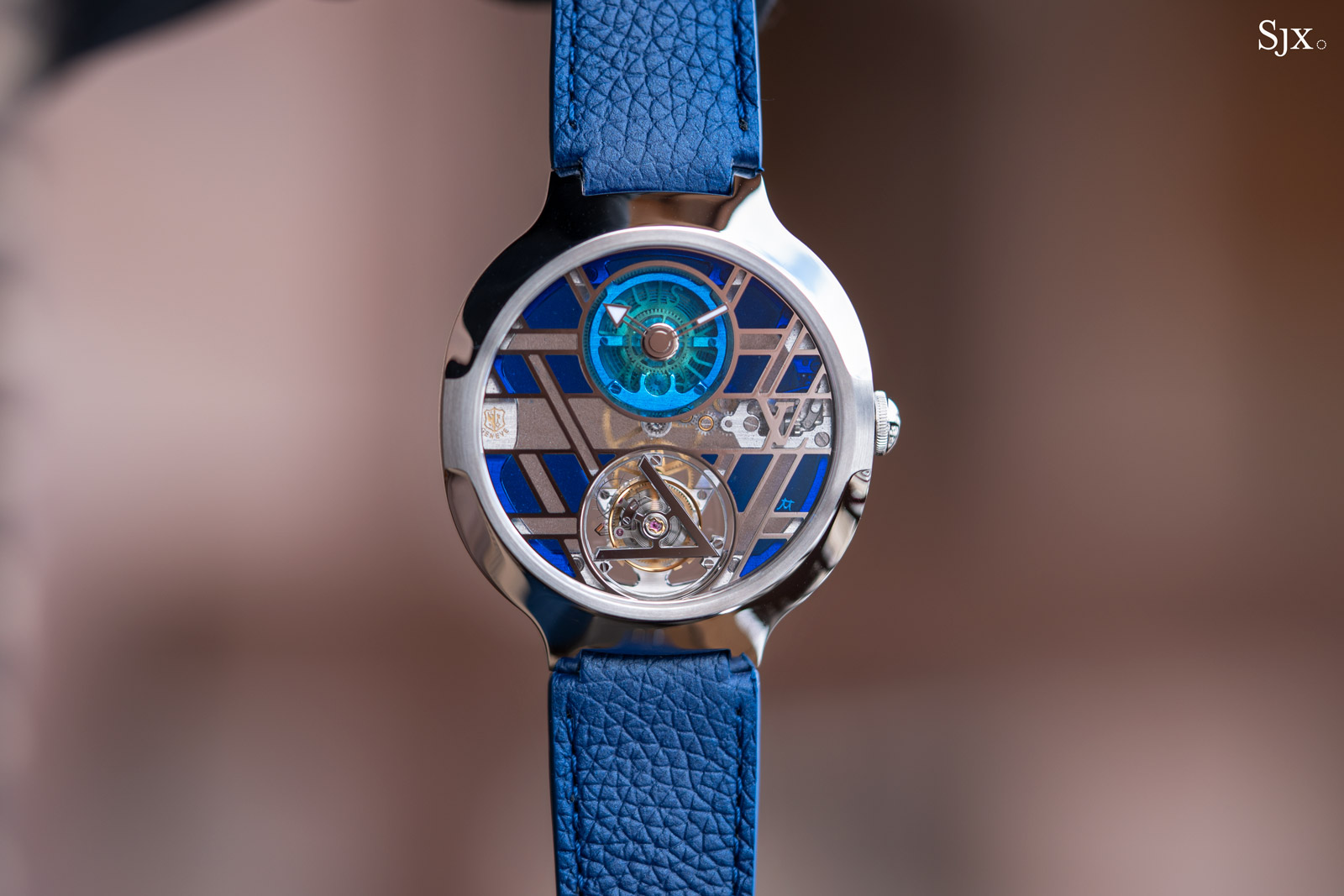
Cased in platinum, the Voyager tourbillon is a hefty watch but gently shaped. It’s also elegantly proportioned with a wide diameter and relatively thin case. The rounded, almost ovoid form that is almost entirely made up of polished, curved surfaces adds to its sleek feel.
Though the watch is sizeable, its details are refined. The movement is extensively open worked, leaving just minimal V-shaped bridges. Done to Poinçon de Genève standards, finishing is excellent and comparable to the quality of Vacheron Constantin’s movements (which also bear the Poinçon de Genève and are made not too far from LFT).
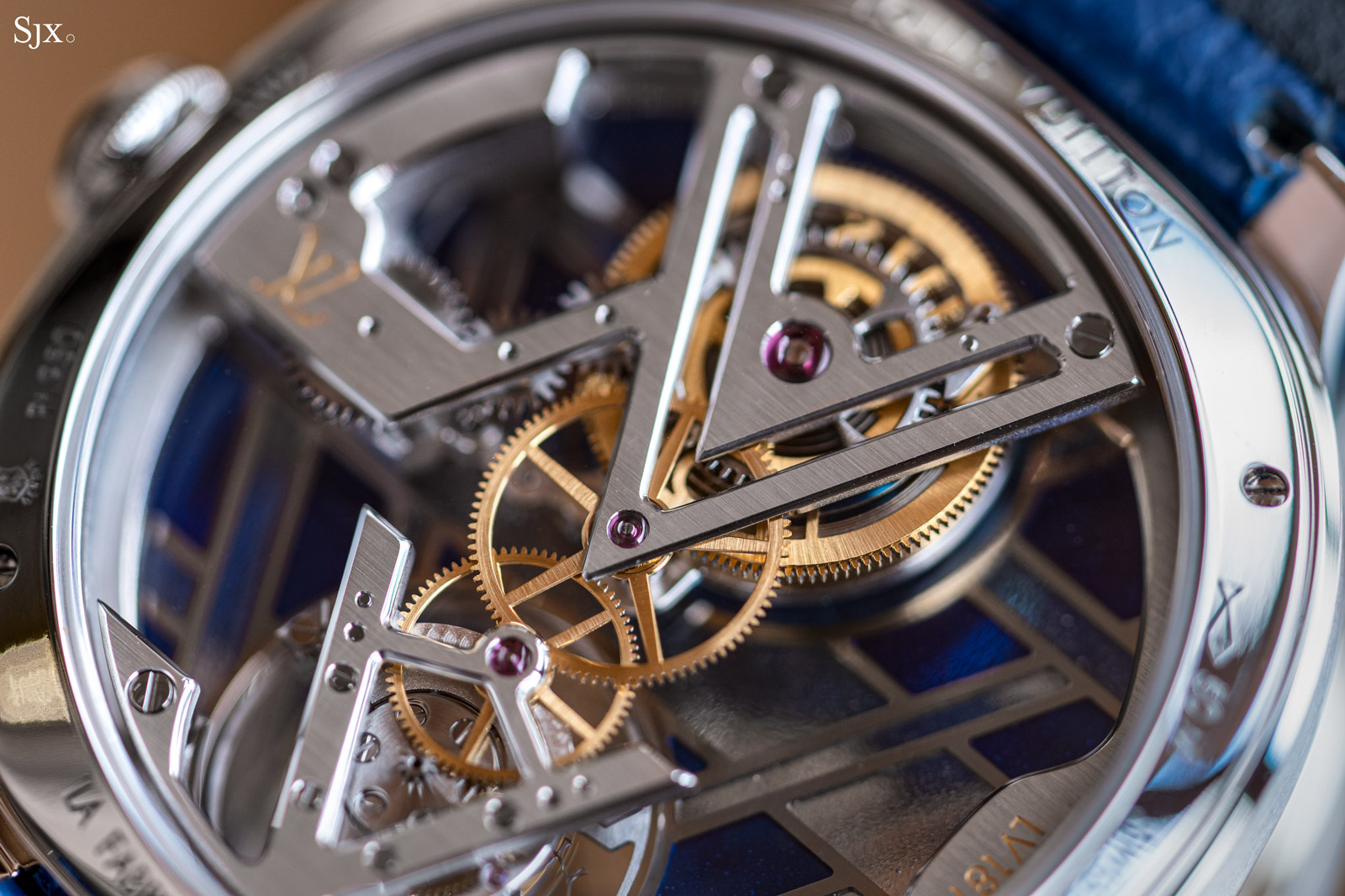
The movement is best admired from the back. Depending on the angle and whether it’s on the wrist, the dial is either vividly coloured or almost transparent as a result of the plique-à-jour enamel, a first for Louis Vuitton and one of the few instances of a such a dial.
Plique-à-jour enamel is perhaps the most uncommon enamelling technique in watchmaking. I can only think of two other brands that have made dials with this technique, Cartier and Jaquet Droz. But only Jaquet Droz has managed a plique-à-jour dial in exactly the same manner (where there is no dial base) and that was a one-off in the Jaquet Droz Skelet-One tourbillon made for charity auction Only Watch 2021.
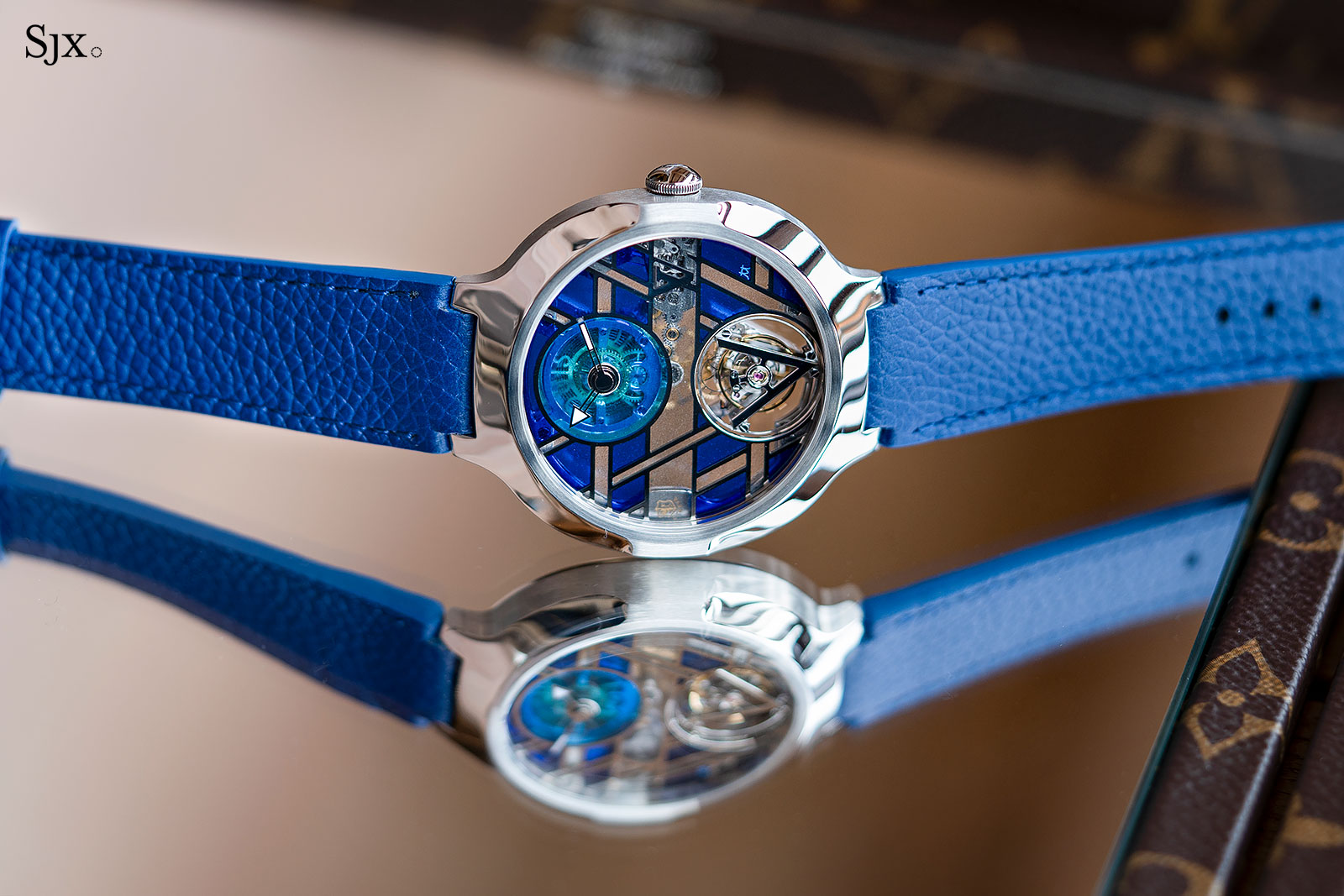
The case is 41 mm wide and 11.68 mm high
Being able to produce a plique-à-jour dial in-house is a feat, particularly since LFT only established its enamelling workshop 18 months ago. Only a handful of brands boast in-house enamel workshops, amongst them Vacheron Constantin and Jaeger-LeCoultre.
The colours of the dial are beautiful, on the wrist and off. That said, the dial on the prototype pictured here does contain numerous tiny bubbles, which should be reduced significantly in the production version.
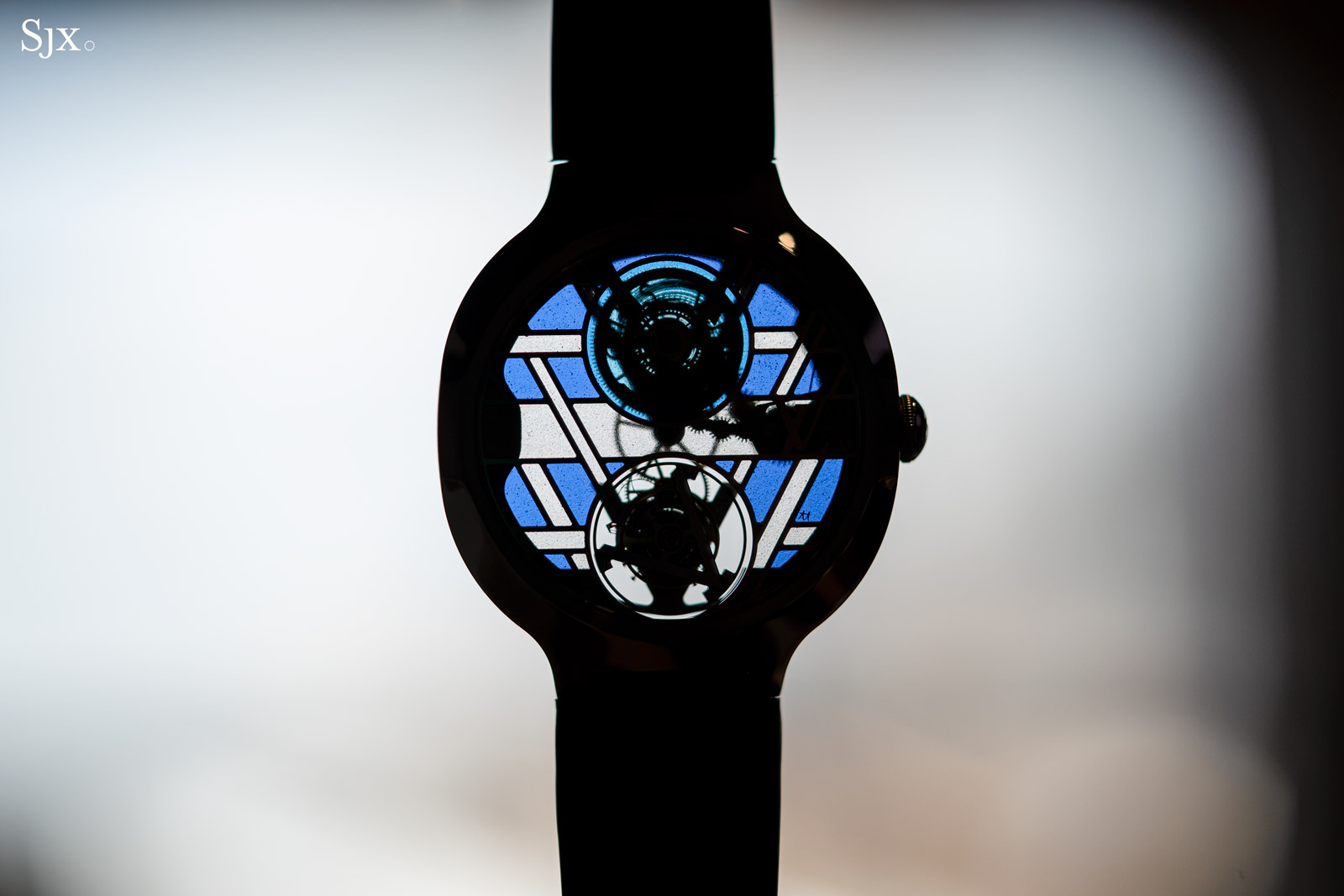
Because the dial has no base, it is thicker than a conventional enamel dial, so much so the dial adds over 2.5 mm in thickness to the case compared to the standard skeleton version, an increase of almost a quarter.
Surprisingly, however, the Voyager tourbillon still feels elegant on the wrist. That’s thanks in part to the proportions; the wide diameter of the case gives it a slim appearance.
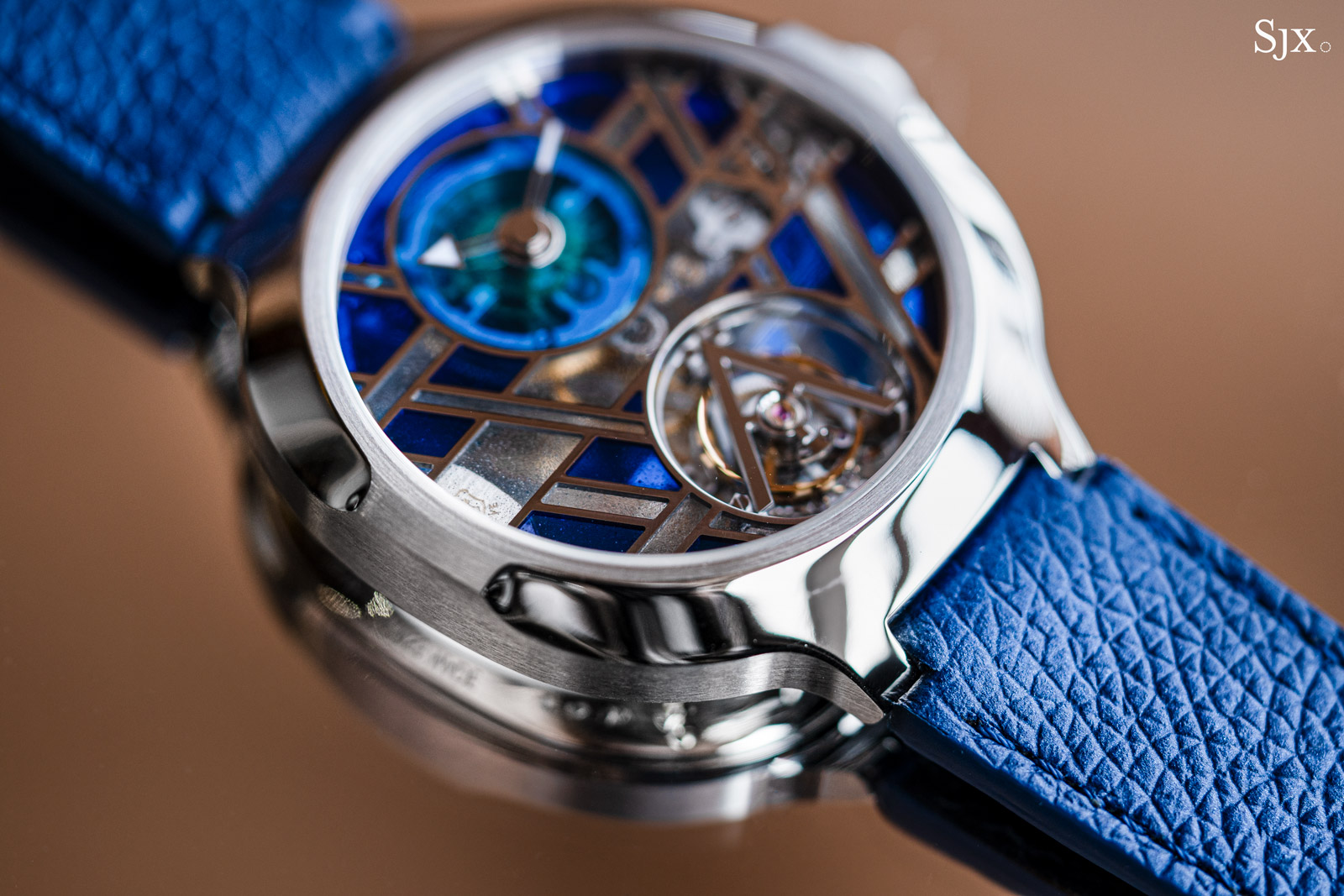
The Voyager tourbillon costs €275,000, or about US$300,000. That’s a big number but in the same range as comparable offerings from Vacheron Constantin for instance.
This doesn’t cut it as a value buy, but the pricing is within reason. Granted, the fact that Louis Vuitton is not a traditional watchmaker will leave some sceptical, but the intrinsic features and quality of the watch are self evident.
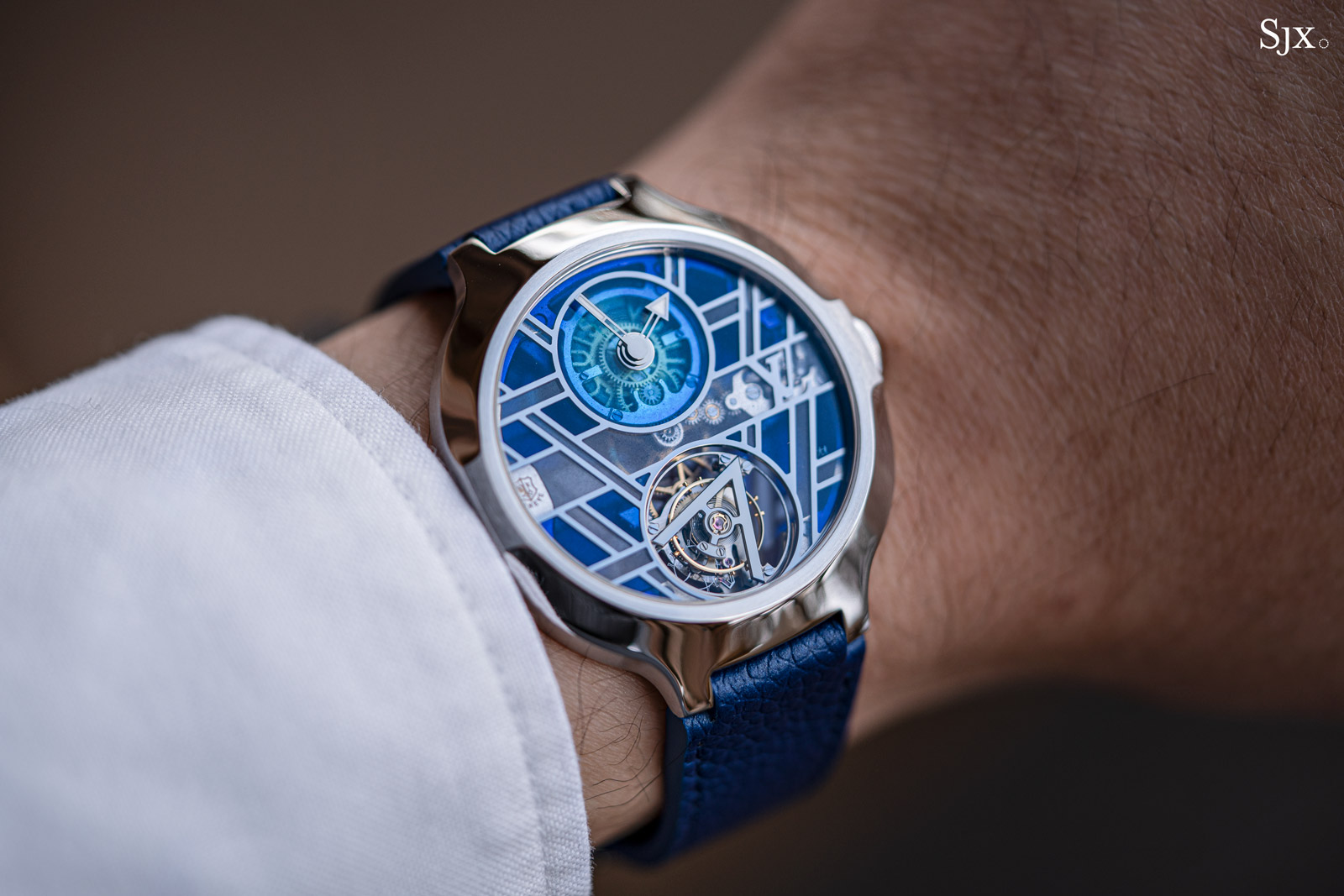
Stained glass enamel
Like better known enamelling techniques, plique-à-jour dates back to the Byzantine Empire starting in the 6th century. Aptly described as stained glass in miniature, plique-à-jour is executed in several forms, but the specific method used in the Voyager tourbillon is pierced plique-à-jour, also known as Western plique-à-jour (as opposed to the Russian or Japanese styles).
This technique relies on an open-worked or pierced lattice that is then filled with enamel, cell by cell, one firing after another, until the entire object is complete. While the dial is in progress, some form of backing is used so that the liquid enamel doesn’t flow out. Louis Vuitton doesn’t reveal the specifics of the technique employed at LFT, but it likely involves a glass or sapphire crystal backing that is removed after firing.
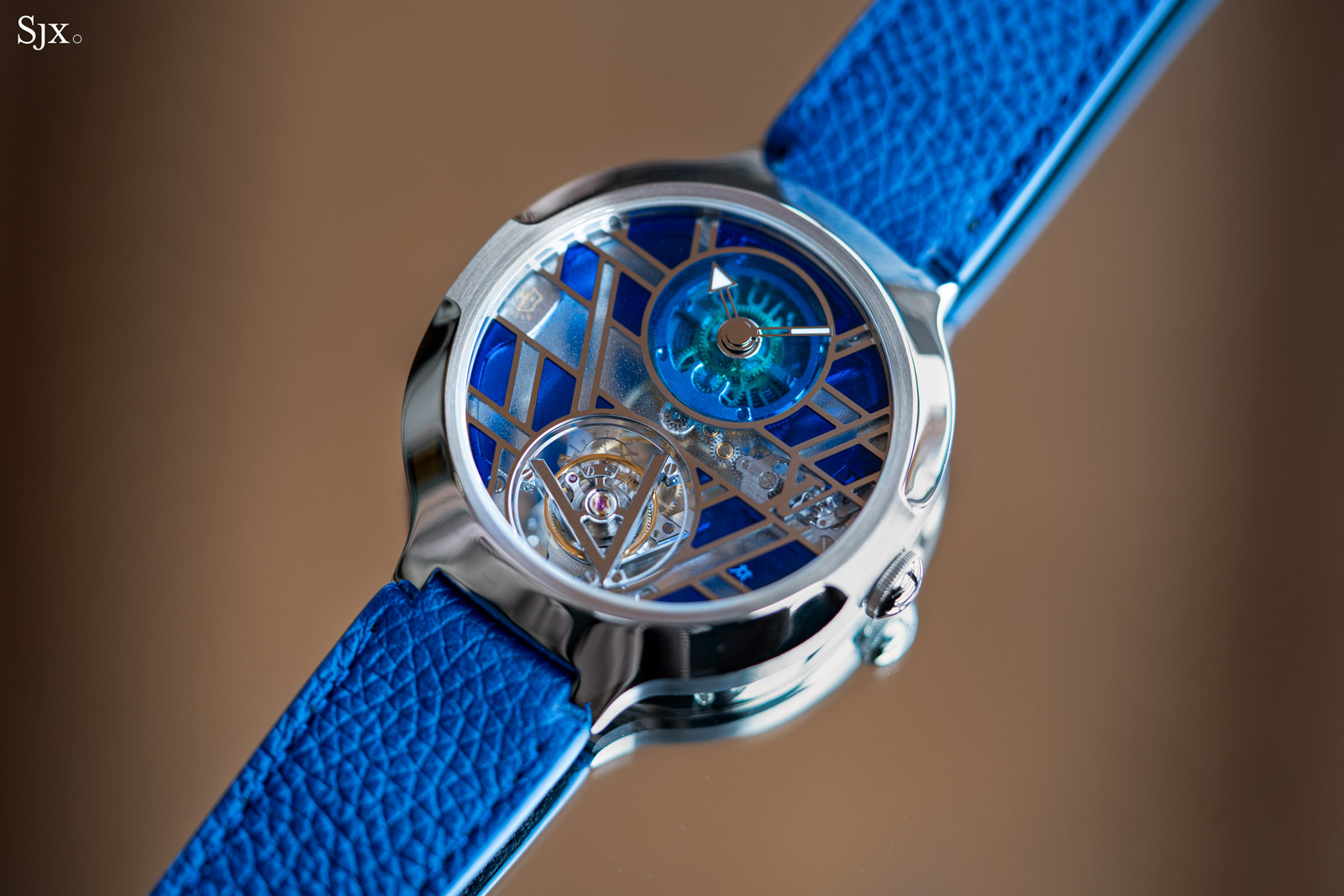
The plique-à-jour dial was made by Nicolas Doublel, who oversees LFT’s enamel workshop that now includes three other artisans.
Formerly employed at Patek Philippe, Mr Doublel first applied the technique to the dial of the Louis Vuitton x Rexhep Rexhepi LVRR-01 Chronographe à Sonnerie. That dial had six amber-tone plique-à-jour hour markers on the dial. The square markers, however, were tiny and the Voyager tourbillon dial is next level in terms of complexity.
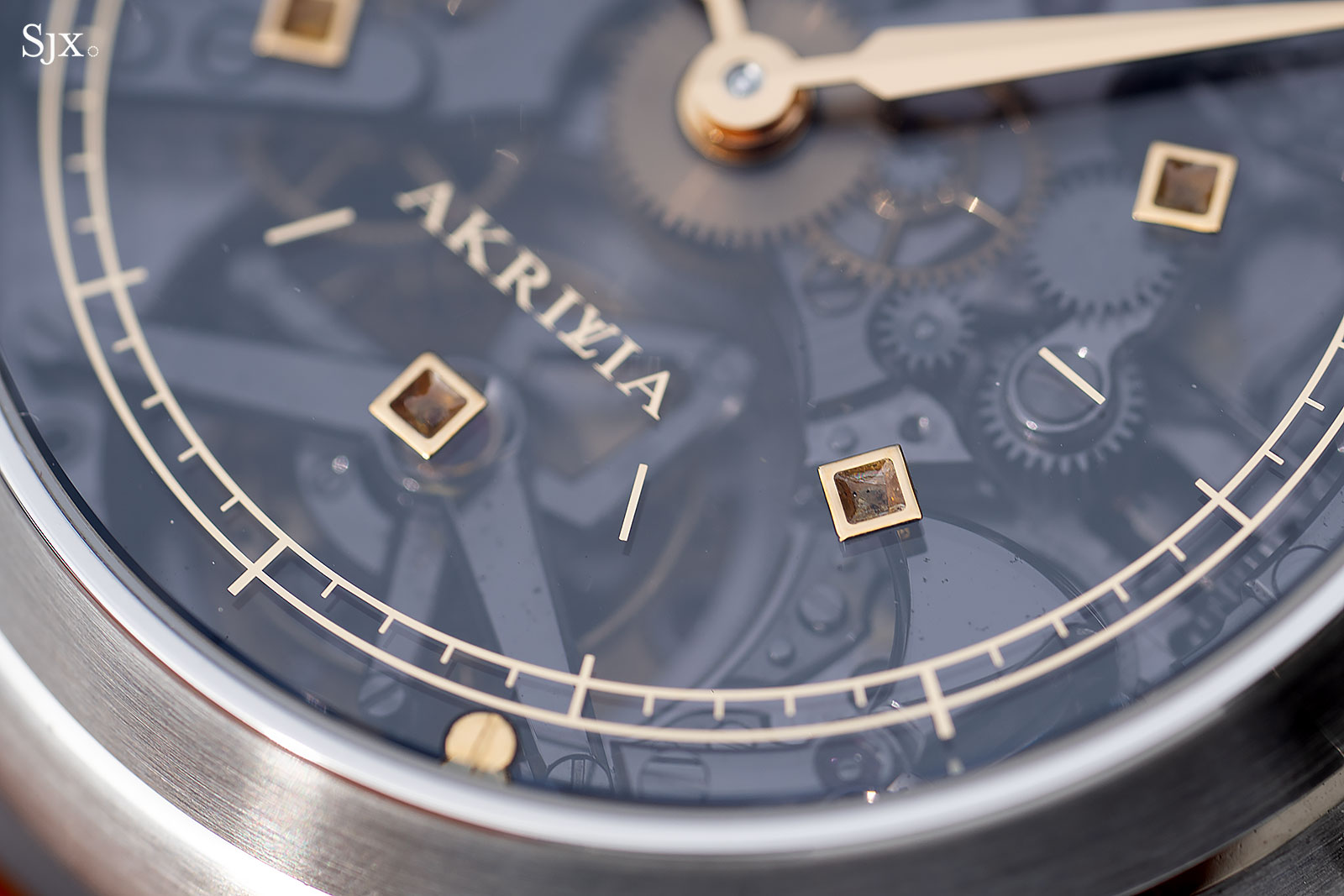
The Voyager’s plique-à-jour dial is an 18k white gold frame open worked to form a repeating “V” motif. Even though the Vs are numerous and large, the aesthetic is restrained; the colours are more striking than the branding.
The enamel is made up of three shades of blue, with the palest being almost colourless translucent enamel. All three are attractive, but the dark blue is especially appealing with its nuanced tones.
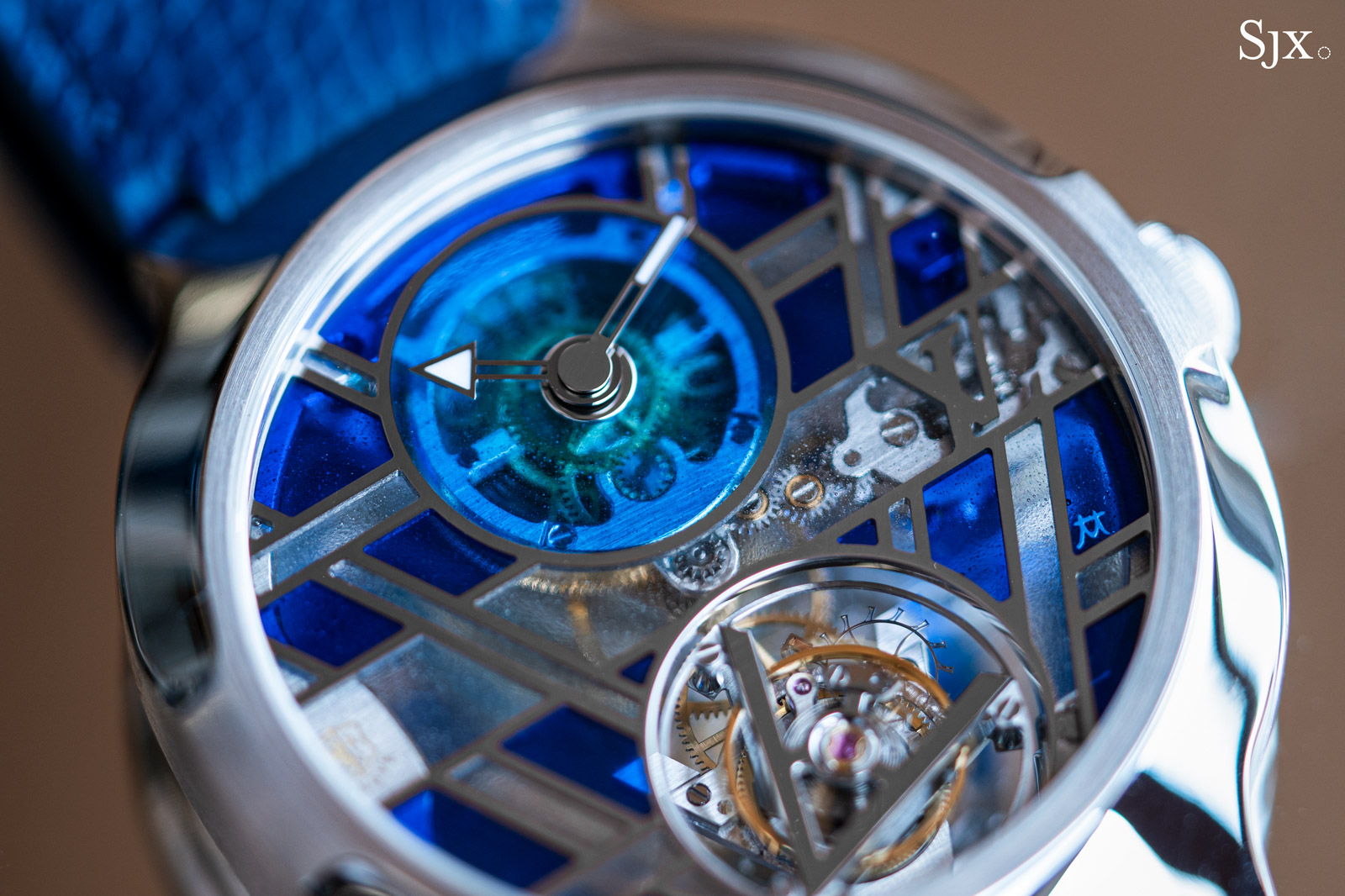
Beyond the enamel itself, the dial is notable for the ring at the centre of the sub-dial for the time, which accommodates the cannon pinion that carries the hour and minute hands. This ring is positioned manually before the enamel is fired, carefully manoeuvred into place in the liquid enamel by hand.
There is presumably a marking on the glass or sapphire backing to aid in the process, but it is nonetheless an achievement. The fraction-of-a-millimetre tolerances of a movement demand precise placement to avoid the cannon rubbing against the ring.
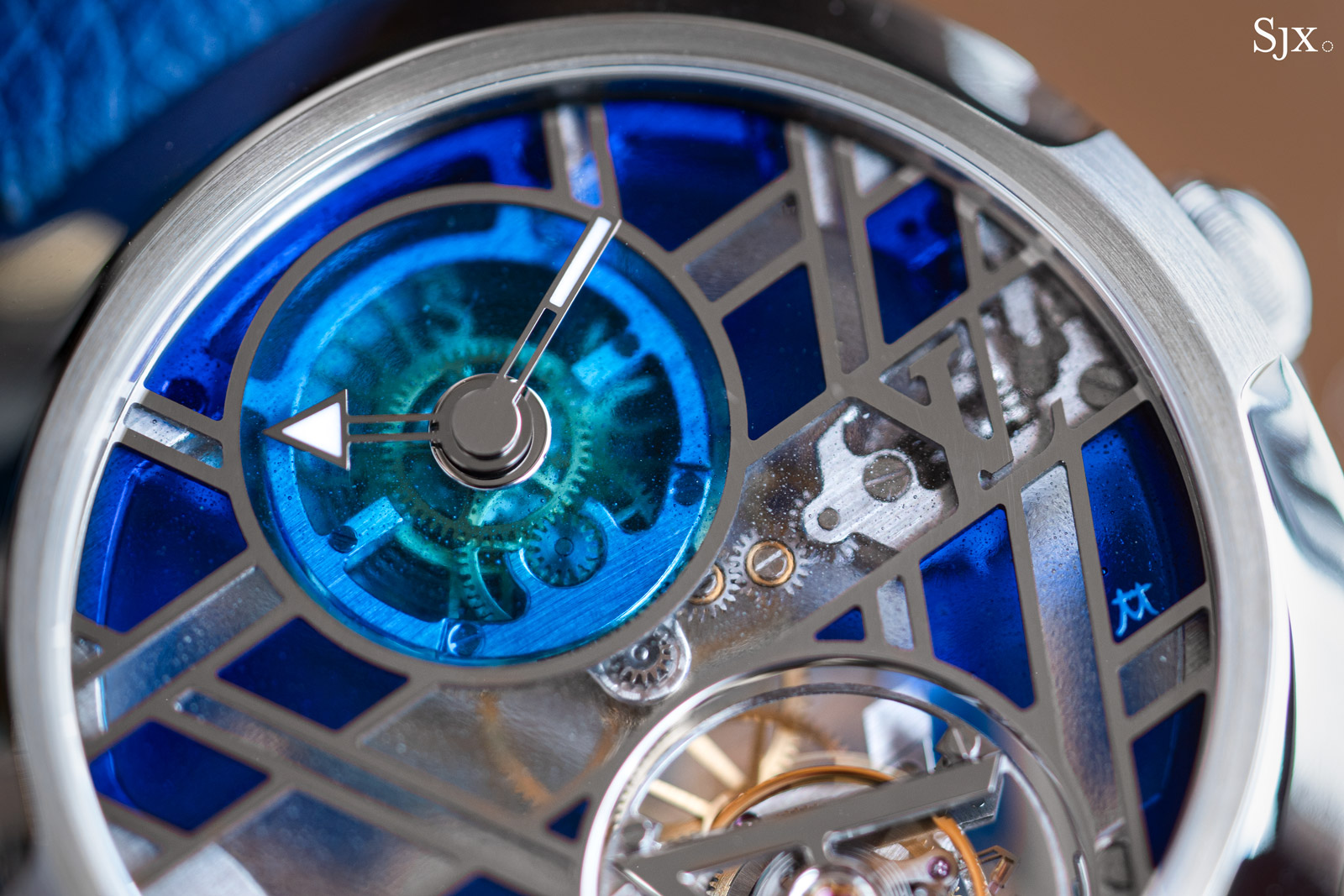
The watch pictured is a prototype, and its dial is not perfect. This is due in part to the technique itself; the transparency of the plique-à-jour enamel leaves bubbles more apparent than on opaque enamel. Production versions of the watch will improve on this according to Louis Vuitton.
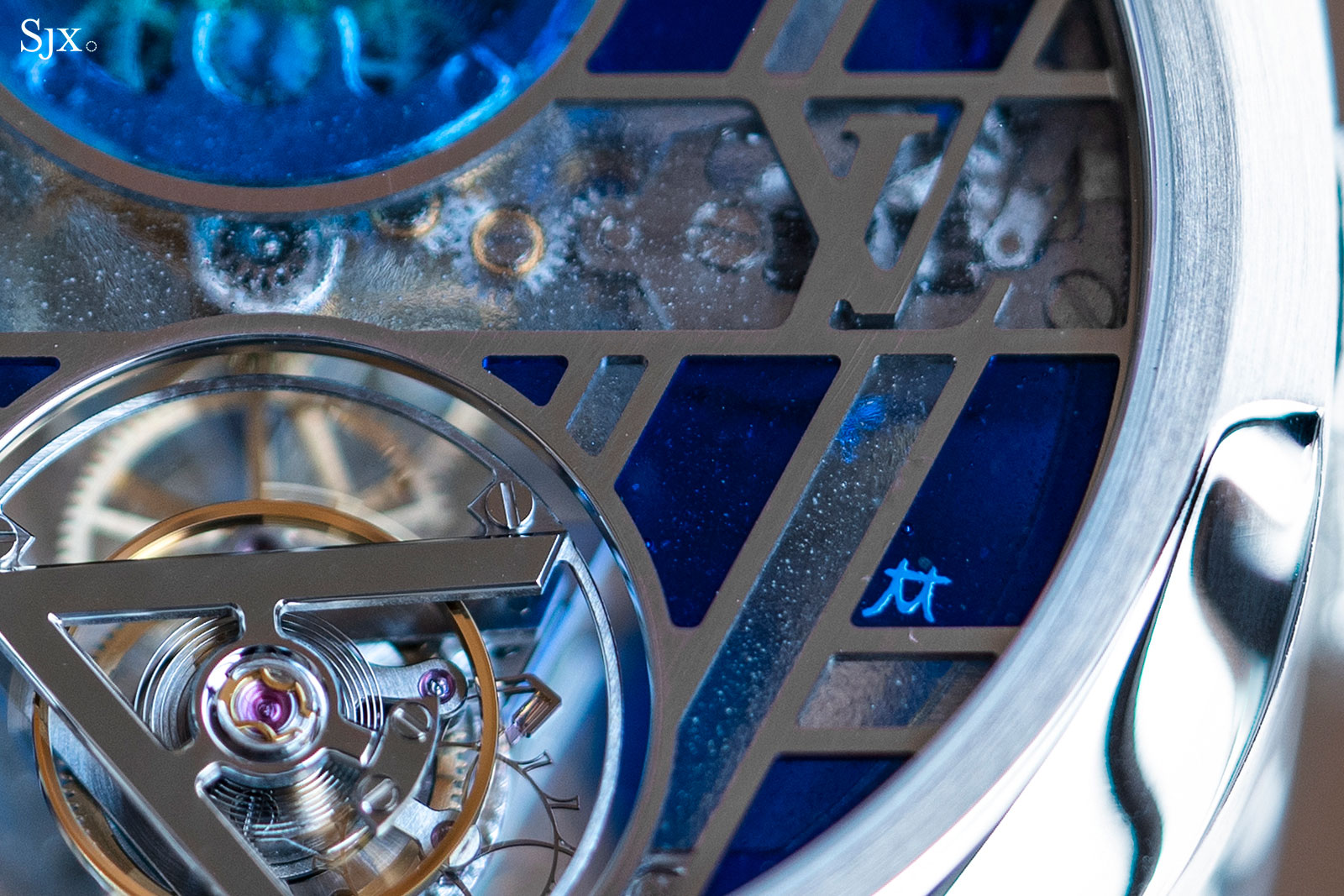
The Voyager tourbillon is equipped with the LV 104, the same calibre found in the 2016 version of the model without an enamel dial. Developed and made by LFT, the LV 104 was the first Louis Vuitton to bear the Poinçon de Genève, or Geneva Seal.
The Poinçon de Genève is a hallmark of both decorative and functional quality, indicating the watch meets criteria for movement finishing as well as mechanical reliability. Though the Poinçon de Genève is not as authoritative as it once was – Patek Philippe halted its association with the Poinçon de Genève in 2009 after 122 years – the seal is still a useful bonus, particularly for a relative newcomer like Louis Vuitton.
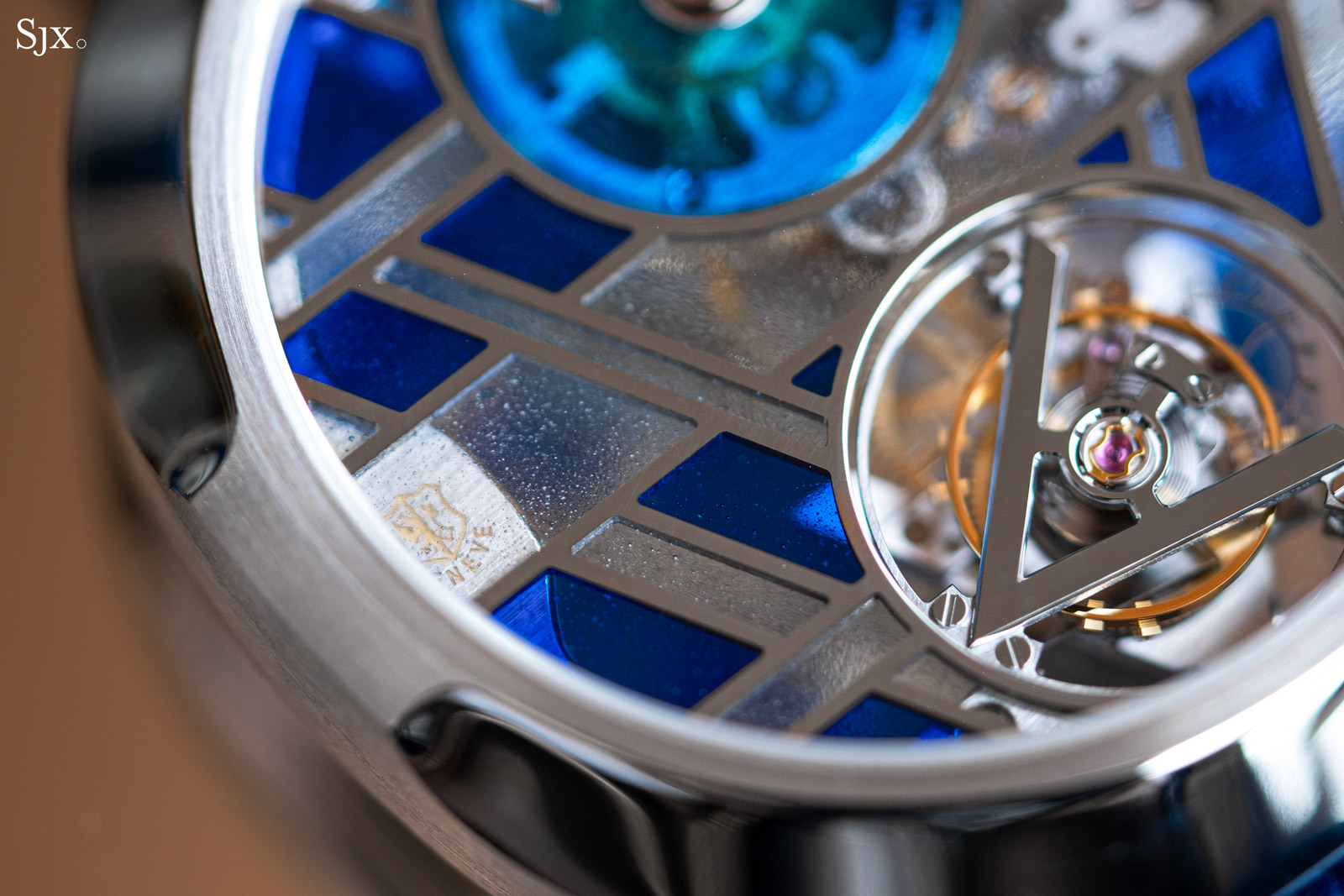
Seal aside, the LV 104 has clearly been decorated properly in the industrial-artisanal style that characterises high-end movements made by major brands, including the skeleton movements of Audemars Piguet.
The treatment is a combination of machine- and hand-finishing, with the finishing touch for most components being done by hand. The bevels along the bridges, for instance, are slightly rounded and mirror polished, without a trace of the machining marks that define purely machine-applied anglage.
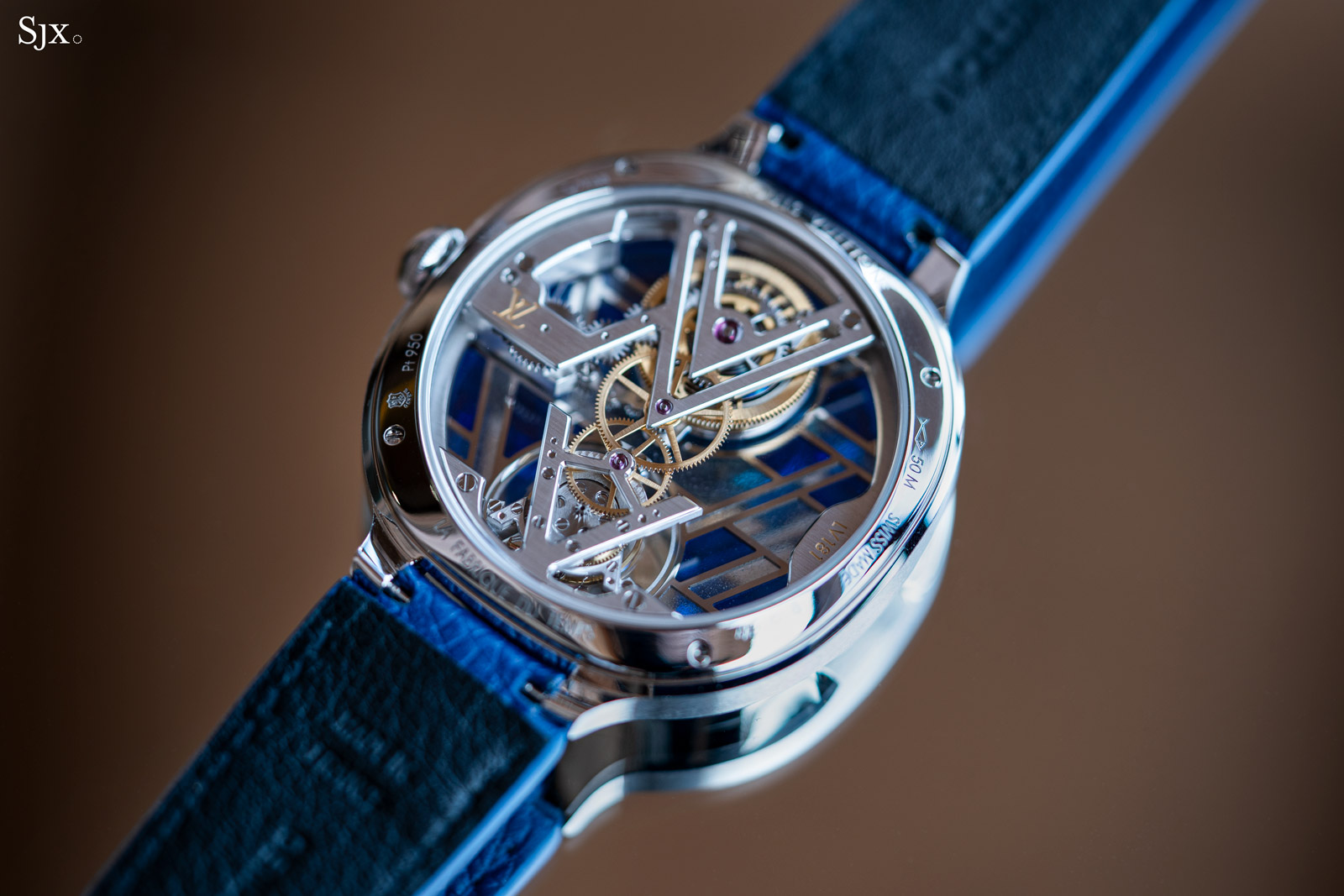
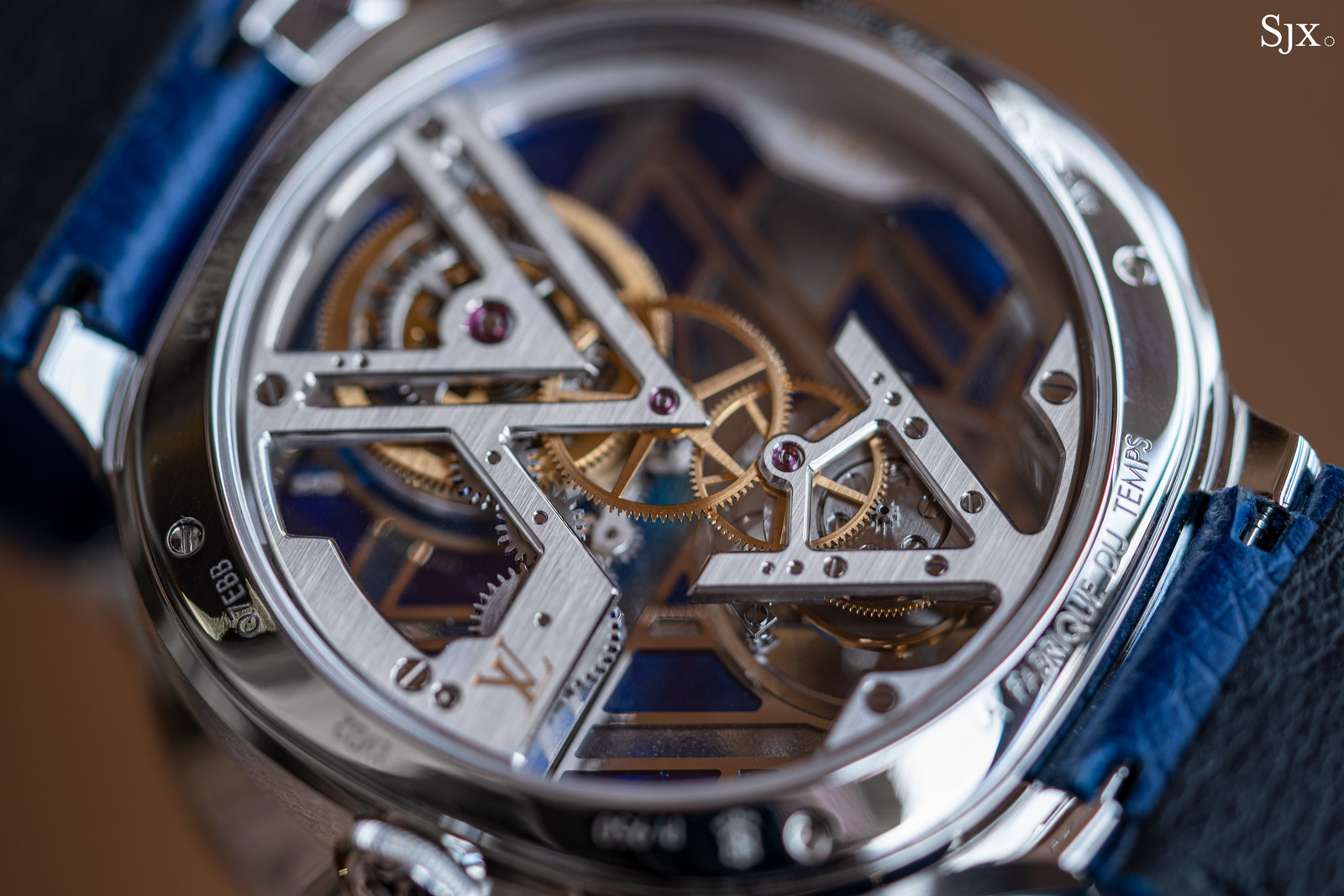
The movement would benefit from one or two artisanal flourishes, the sort of details that keen-eyed enthusiasts would appreciate. Two or three inward angles along the bevelled edges of the bridges visible on the back, for example, or more elaborate fishing of the tourbillon cage on the front.
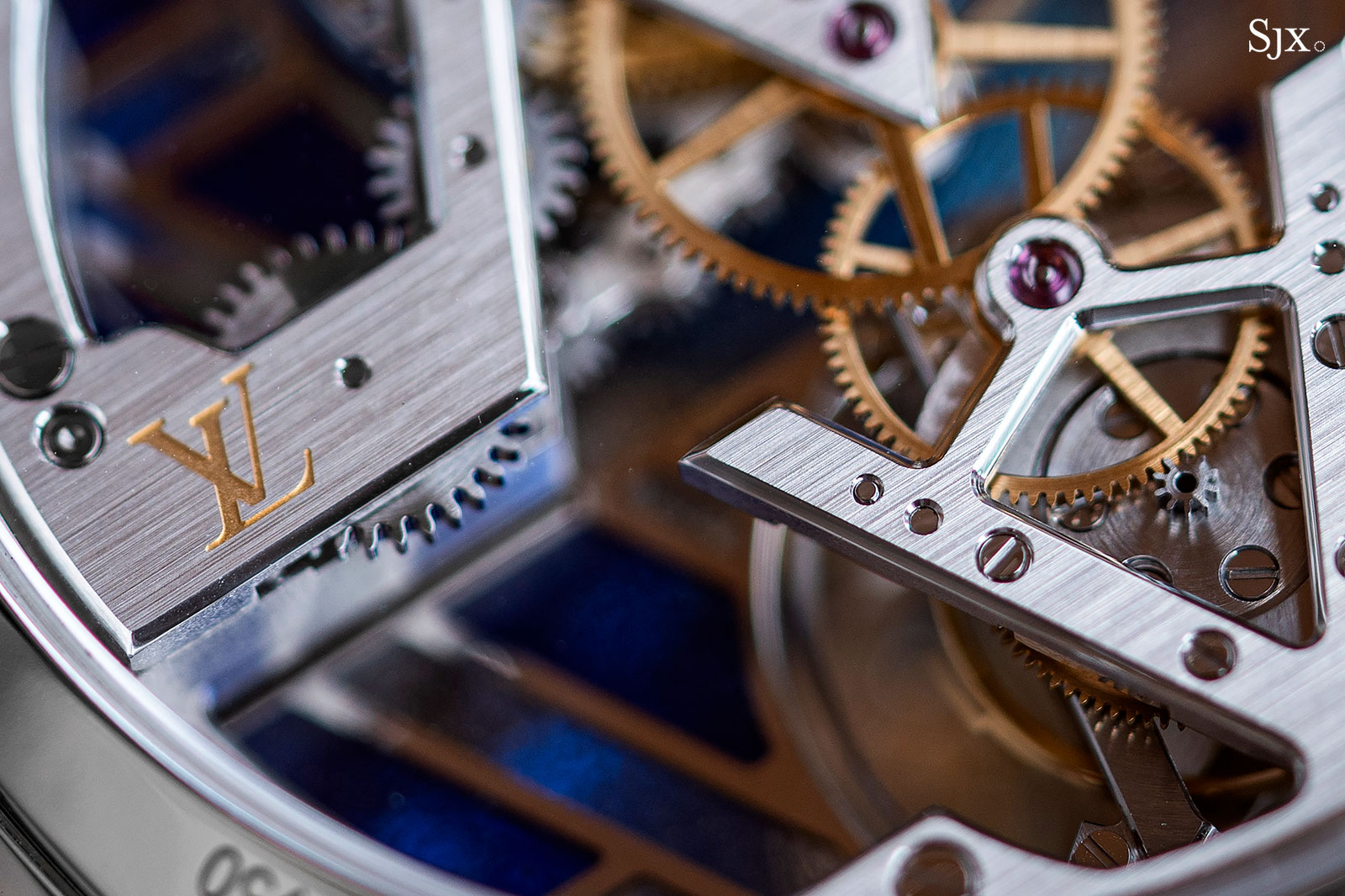
In contrast to the movement and dial, the case is the simplest element of the watch. But it is done well, and also made in-house. Most importantly, it wears well despite the relatively large 41 mm diameter.
The form is simple to the point it looks almost plain at a distance. But it is a subtle form with a round face inside an ovoid case. The case lacks a bezel and instead has a narrow flat ring around the crystal that flares outward at three and nine o’clock, transitioning seamlessly into the case sides. The top surfaces are polished, while the flares and sides are rushed.
Concluding thoughts
The Voyager tourbillon proves Louis Vuitton is serious about watchmaking. The fact that the plique-à-jour dial, skeleton movement, and platinum case are made by LFT indicates a level of manufacturing know-how few others have. More importantly, the quality of each component means that it is not just in-house, but executed in-house to a high level.
While the Louis Vuitton brand name might be a deterrent for traditionally-minded collectors, I see it as positive in the long term, since the brand’s sustained and substantial investment in watchmaking makes it almost inevitable that Louis Vuitton will evolve into a recognised marque in horology.
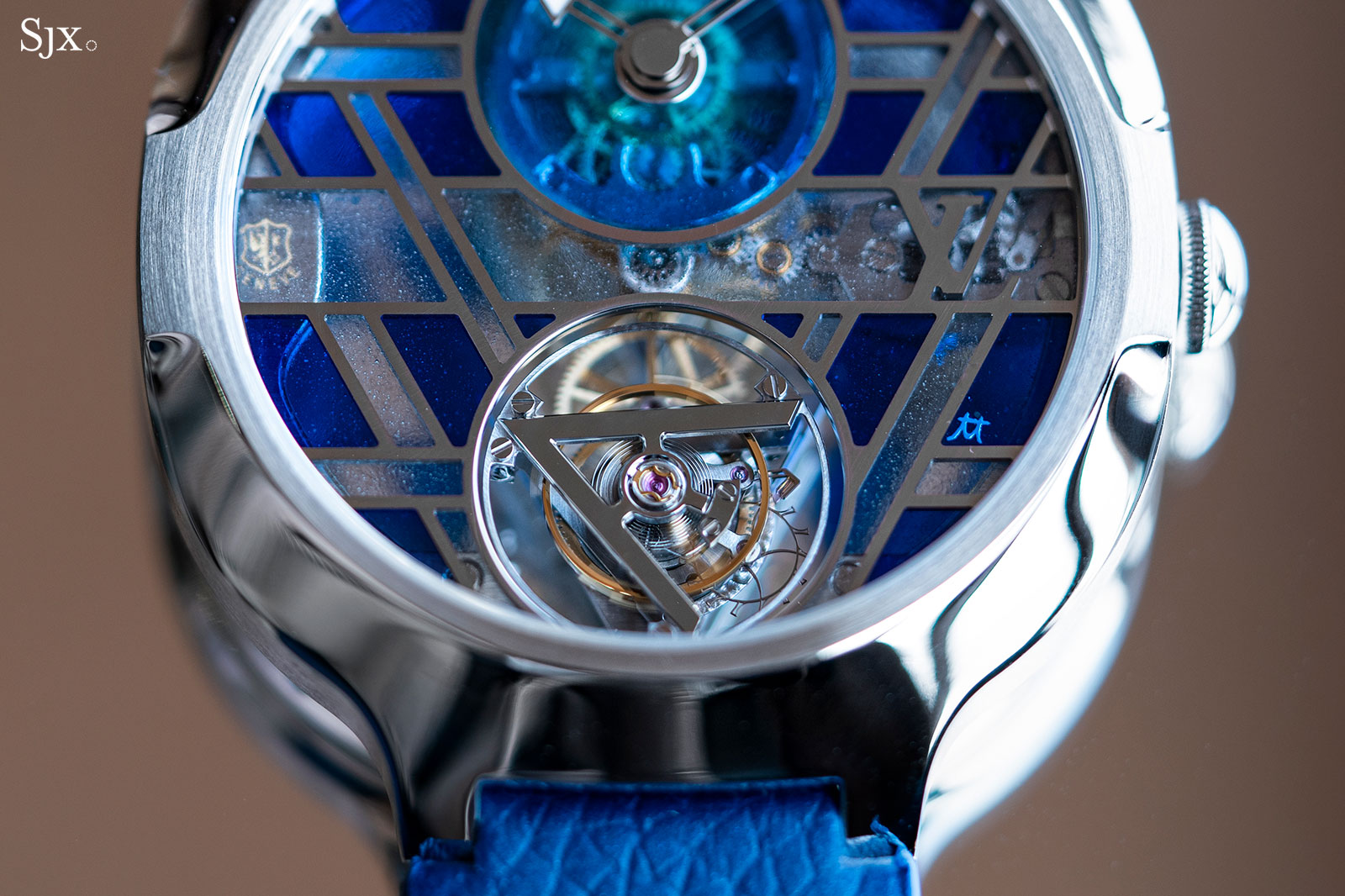
Key specs and price
Louis Vuitton Voyager Flying Tourbillon Poinçon de Genève Plique-à-Jour
Ref. Q7EBBY
Diameter: 41 mm
Height: 11.68 mm
Material: Platinum
Crystal: Sapphire
Water resistance: 50 m
Movement: LV 104
Functions: Hours, minutes, and tourbillon
Frequency: 21,600 beats per hour (3.5 Hz)
Winding: Hand wind
Power reserve: 80 hours
Strap: Leather with platinum folding clasp
Limited edition: No
Availability: At Louis Vuitton boutiques
Price: €275,000 excluding taxes
For more, visit Louisvuitton.com.
Back to top.

